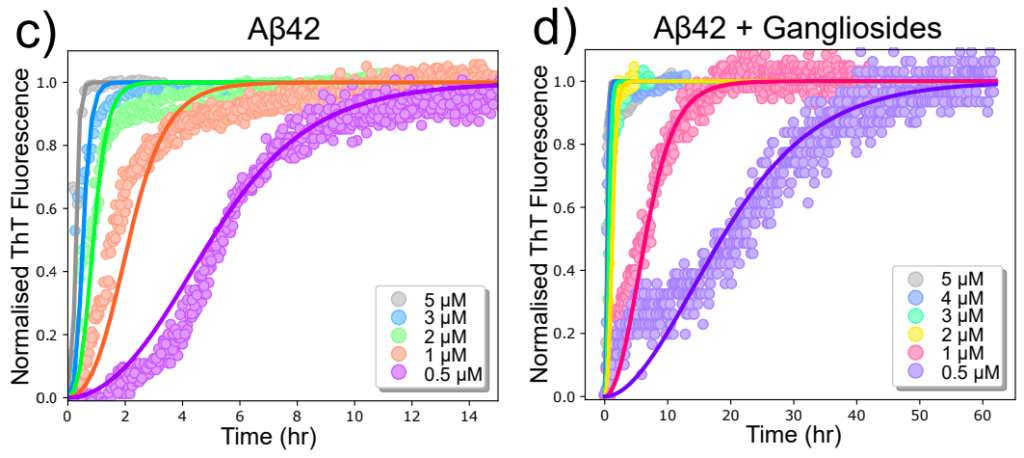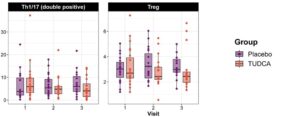
“Ganglioside Lipids Inhibit the Aggregation of the Alzheimer’s Related Peptide Amyloid-β.”
Zenon Toprakcioglu, et al. – University of Cambridge.
This study found that gangliosides, membrane lipids whose levels decline with aging, inhibit the assembly of amyloid-β into fibrils. While other lipids such as POPS also had this effect, gangliosides were more effective by orders of magnitude, suggesting a specific role for these membrane lipids in staving off amyloid-β aggregation. Gangliosides are also in the correct subcellular location to affect amyloid plaque formation as components of the outer half of the plasma membrane, interfacing with extracellular amyloid-β. Preventing the age-related decline in ganglioside levels could thus have a therapeutic and/or preventative impact on AD.






